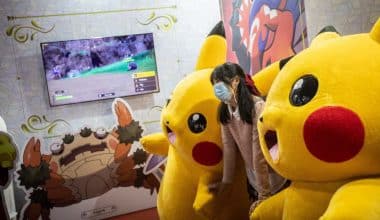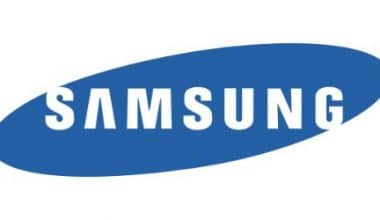If you’re unfamiliar with One Piece, it’s a Japanese manga written and illustrated by Eiichiro Oda. The story follows Monkey D. Luffy and his crew of Straw Hat Pirates as they explore the oceans in search of treasure and adventure. They have published it since 1997, is still ongoing, and has become an international phenomenon with over 200 million volumes sold worldwide in print and digital formats. All you have to do to get the gist of this One Piece Logo is to continue reading this article. This article also tells you more about the history, evolution, founders, facts, fonts, colors, and problems of this logo.
Before we move into the logo, how does this one piece exist?
Founder Of One Piece
Eiichiro Oda, a writer and artist for the series is One Piece’s creator.
Oda was born in Kumamoto in 1975. He always had a passion for writing and sketching and pursued that desire, beginning his career at 17 with Shueisha’s Shonen Jump.
Oda spent four months as a senior in high school writing his first full-length manga, which was influenced by his love of western movies.
The satirical, supernatural western he produced, Wanted!, garnered him attention from industry experts and earned him a prize of 500,000 at the 44th Tezuka Awards.
Oda enrolled in Kyushu Tokai University as an architecture major after graduating high school in 1993.
Oda began his professional career as an assistant to the Shonen Jump creators. This includes serving as a scribe for the final chapters of Midoriyama Police Gang, which served as an inspiration for his writing.
Then, during the final year of Jungle King Tar-chan, he worked alongside Masaya Tokuhiro for 18 months, aiding him in developing a background-creation method.
Within two weeks of Romance Dawn’s popularity, he finished the second draft.
They also printed and received this appreciation. Oda persisted in promoting the proposal despite opposition from some.
The serialization of the series in Weekly Shonen Jump was authorized in 1997. One Piece eventually evolved from Romance Dawn.
How Did Eiichiro Oda Create One Piece?
Rurouni Kenshin was the project on which Oda began his final stint as Nobuhiro Watsuki’s assistant.
One of the most well-known creators of Shonen Jump at the time was Watsuki; Oda also had to cope with the denial of his ideas throughout his career.
Oda decided to conduct a “last-ditch” draft. It was a concept he had for a pirate book called Romance Dawn ever since high school.
The idea was given the green light for more advancement, and they printed it in the Shonen Jump Summer Special.
One Piece Logo
Japanese anime TV show One Piece, created and directed by Konosuke Uda, is based on the same-named manga. The story’s protagonist is a little child who consumes an unknown fruit and developed superpowers.
He journeys across the globe with his pirate crew in search of the coveted “One Piece” treasure to ascend to the position of new pirate king.
The pirate-themed One Piece logo is packed with thrilling danger.
The symbols on the logo encourage viewers to join the franchise’s main character and his straw hat on an adventure to find hidden treasures at sea.
Two oceans surround the entire cosmos, with just a small sliver of land separating them. The earth circles the entire planet, and there are four seas with perilous crossings.
There are also unique fruits that grow there and supernatural abilities that people and things can possess.
The essential characteristic of the Monkey D. Luffy universe is encapsulated in the single One Piece logo. 1999 saw the debut of the unique sign.
Read Also: EXPEDIA LOGO: Everything You Should Know!!!
The comic book game’s visual identity is a tasteful fusion of text and images. The inscriptions make the best use of the drawn elements since they do so in a semi-amorous manner.
The two most important aspects are the emblem on the left and the game’s name on the right.
Another graphic element is the name’s first letter. Its cover art is a white skull gripping a knotted rope in its fangs. He is donning a red-striped yellow hat.
The wide, blackened eye sockets and gaping paint-empty nose features. Behind the skull, a crossbones symbol—traditionally used by pirates—is visible.
The rope travels along the bottom line (and a second line at the top) before coming to an anchor shaped like a capital “E” and being placed sideways.
The serifs on the other two “E”s are flared and appear typical. A red figure in a hat is present in place of “I.” (presumably the main character).
One Piece Logo Emblem’s Font And Color Scheme
The logo’s typeface is distinctive. Symbols from the manga, such as a skull, a man, and an anchor, have been used in place of several letters. Other signs use the standard spelling and have sharp spikes added to the ends. They have serif-like extensions.
The color scheme for the company logo is blue with gradient transitions. He created the border lines and the inscription.
Additionally, it has:
- White (rope)
- Brown (edging)
- Red (stripe, human figure)
- Yellow (hat), and
- Black (little strokes on the rope)
History Of One Piece Logo
1996 – Present
The overall One Piece logo never changed. Two slender lines from up and down outline the nameplate shown in the image.
The leading ‘o’ character has two bones crossing one another behind it, and a skull wearing a thatch cap peers out from the interior of the character.
The letter I is designed to resemble the silhouette of Luffy, the series’ protagonist. The final “e” appears to be an anchor with a rope attached.
This rope is clutched between the teeth of the well-known skull and weaves around the lower outline of the logotype.
Although this is the standard logotype, it filled the Internet with numerous other alternatives.
These logotypes appear episodically on the covers of particular volumes or, in particular, the One Piece anime series.
The primary pirate notion is always discernible despite the logotypes’ varied elements, hues, and features.
1999 – Today
The TV show’s name is displayed in a distinctive typeface in the show’s traditional logotype.
The letter “O” has a hole where the pirate skull stands and is wearing a cap. In place of the letter “I,” a crimson boy’s silhouette is there.
With ropes interwoven in them, the lines above and below the entire logotype are drawn.
The logotype comes in numerous variations, both created by fans and officially. In each episode of the program, it featured the official variants.
These variations differ not just in their use of color but also in how the skull and the silhouette are positioned and what they are given.
Evolution Of One Piece Logo
One Piece is a tale written and illustrated by Eiichiro Oda, one of the world’s highest-grossing media franchises and unquestionably one of the most well-known brands based on Japanese manga.
Oda created the narrative and illustrations in the first One Piece manga.
The original publication of the tale was in Shueisha’s Weekly Shonen Jump. Today, One Piece has expanded to include a movie, and an anime series, produced by Toei Animation, in addition to 98 volumes of tankobons (a comprehensive manga collection).
With 13 TV shows, a collection of fourteen feature-length cartoons, a video animation, and a variety of video games, One Piece has amassed enormous success over the years.
The One Piece emblem has also been used to create many card games and other well-known works of art.
Despite having its roots in Japan, One Piece has quickly gained global recognition and is now available in over 43 countries.
The One Piece logo is based on the name of the manga series. 1996 saw the start of Eiichiro Oda’s One Piece.
It’s a great addition to the Shonen Jump and Akamaru Jump magazines because fantasy and adventure-themed stories fit their genres.
The editorial office turned down the writer’s request for a publication, although he did manage to appear in several well-known journals.
Read Also: BUICK LOGO: Meaning, Old Logo, & History
A demand for a recognized One Piece insignia didn’t emerge until 1999 since it has always been the same One Piece logo.
However, it’s important to note that several One Piece logos have been modified to fit various manga and spin-off series editions.
An appealing blend of text and images makes up the One Piece brand’s visual identity.
A distinctive wordmark with short, pointed serifs is printed in all capital letters. The font is quirky and appears to have been hand drawn, contributing to the story’s youthfulness.
The wordmark contains the graphic elements already. One such example is the “E” at the end of “One Piece,” which is an anchor attached to a rope that wraps around the lower border of the two lines enclosing the wordmark.
The skull and crossbones, another distinctive One Piece symbol, can be seen inside the letter “O” in the word. It’s usual practice to depict pirates in this way. The graphic of the skull and crossbones is fairly straightforward but entertaining, emphasizing the lighthearted tone of the narrative.
The straw hat on top of the skull serves as a visual reminder of the straw hat pirates, a significant component of the One Piece character arc. Intriguingly, the anchor rope is held between the teeth of the skull and crossbones in the emblem.
Variation Of The One Piece Logo
Over the years, several distinct One Piece logos have been employed, each with a unique representation of a particular function. For instance, the Japanese title of the show appears at the top of the emblem in Japan.
The official manga for the narrative also has a black-and-white version of this logo designed for both languages.
They have also used the logo in other One Piece franchise products with minor adaptations. As an illustration, the original “Shonen Jump’s” One Piece logo used by 4Kids from 2004 to 2007 features a little different color scheme.
According to the location where the program or manga was released, the One Piece logo’s colors have changed numerous times. The logos have also been utilized in versions of several businesses, with somewhat different colors.
The wordmark of the One Piece logo is typically a gradient of light and dark blue, while the protagonist’s outline is typically bright red, the rope is typically brown, and the skull and crossbones are typically a combination of black, white, yellow, and red.
Phantom King Graphics appears to have called the One Piece emblem “One Piece,” shown in both uppercase and lowercase characters. Some individuals think the “Anime Ace” lettering is remarkably similar to the font used in the One Piece logo.
The One Piece logo font is a unique typeface created especially for anime creation, similar to many brands that rely on typography to make an impact on their audience.
One Piece Logo Font
Eiichiro Oda is the author and illustrator of the Japanese manga series One Piece. It chronicles the exploits of Monkey D. Luffy, a young guy who accidentally ate a Devil Fruit and now has a body that resembles rubber.
Luffy wanders the ocean in quest of “One Piece,” the world’s greatest treasure, with his varied band of pirates, the Straw Hat Pirates, to overthrow the current Pirate King.
A font called One Piece, created by Phantom King Graphics, bears a striking resemblance to the One Piece logo. Uppercase, lowercase, numbers, and most punctuation marks are all included in the font.
Facts About One Piece
#1. The Guinness Book of World Records is held by One Piece.
One Piece fans know that there is still much more to this saga. Since they published the first manga book in 1997, the Straw Hat Crew has been on numerous epic adventures.
Author Eiichiro Oda has developed an addictive series for readers worldwide by utilizing epic fights, deep character development, and swinging settings.
The manga has sold the most copies of any ever published, proving its popularity.
#2. To avoid getting a “proper job,” Oda began his career as an artist.
The love of storytelling and drawing led many comic book and manga creators to begin their careers. Even though their careers may not have begun in their favorite industry, many eventually find their way to the job they love.
However, manga artist was the sole career option for novelist Eiichiro Oda.
#3. Earlier character plans and designs
Like in every ongoing novel, key plot points and character developments occur early. In the case of One Piece, they illustrate several characters in ways that dramatically diverge from how they ultimately appear.
For instance, the adorable Tony Chopper figure was first depicted with a sword and a more realistic-looking reindeer aspect!
#4. Pirate references from the past
The Straw Hat Pirates have come across numerous pirate bands on their quest. Many of these characters are based on well-known clichés and characteristics we have come to know about pirates, even though none of them have ever worn the clichéd eye patch.
Many characters are based on historical pirates, adding depth to the personalities.
#5. One Piece-specific Theme Parks, Exhibitions, and Restaurants
Fans of One Piece will be glad to know that there are additional ways to enjoy their favorite anime outside the many films, television shows, and manga.
You can immerse yourself in the Straw Hat Pirates’ universe if you’re ready to travel abroad.
#6. Luffy is a spokesperson for the 2020 Tokyo Summer Olympics.
Tokyo appears to have incredible plans for its Olympics in 2020, as evidenced by its official announcement film, which aired during the 2016 Summer Olympics in Rio. The Japanese Olympic Committee featured well-known characters from anime, video games, TV, and other forms of popular culture in its film. It fulfilled the ideal nerd’s fantasy.
Tokyo declared that several anime characters would serve as its Olympic ambassadors to expand on the popularity of anime, one of its most lucrative “exports.”
One Piece has to be on this list, given its widespread appeal and devoted fan base.
Problems Of One Piece
#1. The Animation’s Quality Varies
One Piece’s animation quality and style have seen numerous alterations since it first debuted in Japan in 1999. One Piece has consistently struggled with inconsistent animation quality, despite some newcomers to the show finding that the early years’ animation has aged dramatically compared to modern standards.
#2. The American Release Was Badly Executed
One Piece was acquired by the American production company 4Kids Entertainment in 2004 after the show enjoyed tremendous success in Japan.
However, some portions of the anime were deemed inappropriate for its youthful demographic by American TV networks. 4Kids made they made significant alterations to the show to the show, including cutting out entire storylines and editing violence and blood.
Some of the adjustments were absurd, with Sanji’s cigarette turning into a lollipop and firearms turning into water guns.
#3. It’s Absurd how women are portrayed in the design
While it is okay for artists to represent their characters in whatever they like, the overtly sexualized depiction of women in One Piece is inappropriate.
Female characters frequently have enormous breasts and incredibly small waists and almost always wear skimpy, unsuitable attire.
Because they have physically impossible body proportions aside, their chest sizes alone would make them less effective in most combat situations.
Many fans have expressed their dismay about Robin and Nami’s post-time skip design modifications. These ” upgrades ” mainly aim to sexualize them further and appease their followers.
#4. The Kamabakka Kingdom’s women received mocking treatment
Those born males who live as women in the Kamabakka Kingdom are in a safe place to be who they are. Unfortunately, these women are not given much attention in One Piece.
Their ludicrous character designs—many of which are eerily reminiscent of demeaning anti-trans caricatures—make this clear.
The Kamabakka ladies welcomed him to their home, but Sanji, convinced that he did not regard them as real women, was extremely disrespectful to them.
Mostly for comedic effect, he interacted with them. Many people, and Western viewers, in particular, find the way the series treats the Kamabakka Kingdom disappointing.
The Statistics Of The One Piece Logo
- There are 779 episodes in the series.
- The longest episode is Episode 768, which is over 29 minutes long. The shortest episode is Episode 1, which is only 1 minute and 26 seconds long.
- The most episodes in a single season (besides the first season) are 182 episodes in Season 2 of One Piece.
- The logo of One Piece is one of the most recognizable in the world, and it’s not hard to see why. It’s simple yet complex, with a strong sense of movement and action that makes it stand out from other logos. It has become a symbol of all that is great about the series.
- It is one of Japan’s most popular anime series and is very popular in other countries, such as the US, Germany, and France.
- They have also translated it into English, Spanish, French, Dutch, and German!
- One Piece has been running for over 20 years and has over 200 episodes.
- The current season is called ‘One Piece Film: Gold’, which will be released in July 2020.
- There are currently 190 episodes in total so far by Toei Animation Corporation (TAC) has created that so far. They released the first episode on July 23rd, 1997, after being delayed for about two years due to production issues.
- The plot revolves around Monkey D. Luffy, who wants revenge against the King of the Pirates who killed his grandfather, Ace, when he was just a child!
Frequently Asked Questions
How do you interpret the One Piece Logo?
The logo’s colors are meant to symbolize the key components of the story, from the blue of the sea and sky fusing to the rope’s brown color to the crimson of the devil fruit that gave the protagonist his distinctive personality.
One Piece is finished in what proportion?
The manga for One Piece is indeed 70% finished, according to the author Oda, who stated this in an interview. The conclusion of one piece, he added, has already been decided. Now, all that is left for him is to run out of story arc ideas and concentrate on the conclusion he has in mind.
How well-liked is One Piece globally?
The fact that Eiichiro Oda’s long-running pirate tale is the best-selling manga series in history, with roughly half a billion copies in print globally, doesn’t surprise me, given how well-liked it is all over the country.
How many units did One Piece sell?
More than 500 million copies of the perennially popular manga have been printed worldwide.
Conclusion
It’s time to wrap up! I hope you’ve enjoyed reading this article and that you learned a thing or two about logo design. I’m sure we’ll be seeing each other again soon, but for now, remember:
A logo is not just a design! It’s also an expression of the brand and its values. We can use it as an icon for a company, but we can also use it in many other ways.
Related Articles
- Good Skateboard Brands: For Beginners And Pros 2023(Updated)
- MISFITS LOGO: Its Meaning, Origin, and Its Tattoo
- PUNISHER LOGO: The True Meaning of the Controversial Logo, Revealed!!!






